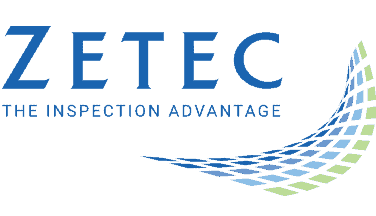Devices and Accessories to Improve Your Pipeline NDT Methods

Despite highly-publicized ongoing battles between environmentalists and producers regarding pipeline projects, many projects are moving forward. After overcoming a multitude of regulatory and environmental hurdles, producers are anxious to complete these projects as efficiently and cost-effectively as possible. One critical factor in the success of these projects is the speed and accuracy of pipeline nondestructive testing (NDT) methods to verify welds. Pipeline integrity is a prerequisite for safe pipeline operations.
Improvements in the technologies associated with pipeline NDT methods—probes, instruments, and software—are giving inspectors ever-more powerful devices and accessories to improve inspection speed and accuracy. Selecting the right combination of devices or configuring accessories to meet specific pipeline inspection needs such as long seam and CRA welds can improve the probability of detection while enabling a lean and efficient inspection process.
Solutions for Combined PAUT and TOFD Inspection Methods
Component miniaturization has enabled more power and performance to be packed into systems and probes, giving them greater accuracy and applicability while making them easier to use on-site and in confined environments. Phased array ultrasound (PAUT) and time-of-flight-diffraction (TOFD) techniques can work together to provide the most accurate detection of flaws.
The improved accuracy of the phased array ultrasound scanning method comes from multiple individual elements—anywhere from 16 to 64, or even more if necessary—arranged in a 2D matrix contained in a single probe. Controlling each element in the probe generates a precise beam shape that provides two- and three-dimensional views of welding flaws with greater speed and accuracy, making it ideal for detecting planar and surface-breaking flaws. To further optimize the inspection process, wedge assemblies can be selected to match the contour of the outside diameter pipe surface being inspected.
Even greater inspection accuracy can be achieved with the addition of TOFD using a pair of ultrasonic probes situated on opposite sides of a weld. One probe is a transmitter; the other is a receiver. Simultaneously combining PAUT and TOFD methods detects all types of embedded welding flaw types and provides reliable through-wall sizing capability. Using PAUT and TOFD together improves efficiency by reducing the number of inspection scans and manipulations.
Configurable Crawlers Reduce Inspection Time
The combined use of PAUT and TOFD techniques is facilitated by configurable crawlers that correctly align the probes—PA and TOFD, precisely guiding them over the weld. Crawlers can be quickly configured to support circumferential or axial weld inspections. The more advanced crawler devices incorporate magnetic wheels, motors, and controllers to further improve the accuracy and consistency of inspections, as well as reduce inspection time.
Portable Devices Facilitate Quick Setup
While miniaturization has enabled manufacturers to pack more functionality into scanners and probes, reducing their size and making them more convenient to use, there is still much room for improvement. On-site inspections can be complicated by other construction activities, obstructions, or a limited time to conduct inspections. Portability and ease of setup are critical factors affecting the overall inspection efficiency.
The latest UT test instruments couple the power of 64 channels for PAUT and TOFD uses with high-resolution total focusing method (TFM) capabilities that can capture 1 million data points per frame. To minimize setup time, as soon as a probe is connected the specific encoder-related parameters are programmed automatically.
Software is the Foundation for Improved Pipeline NDT Methods
Software and analytic algorithms are responsible for some of the most significant improvements regarding the efficiency and accuracy of pipeline NDT methods. Software running on portable inspection devices enables rapid configuration in preparation for specific pipeline inspection procedures. With rapid configuration, inspectors can:
- Automatically calculate focal laws, allowing virtual probe positioning on the weld area to ensure maximum volumetric coverage.
- Perform ray tracing with coverage mapping to determine the detection capability and inspection coverage.
- Quickly select probe frequency to match the characteristics of the pipe material being inspected.
- Setup a dual transmit/receive configuration for inspection of complex geometries associated with stainless steel structures and austenitic metal welds.
With all of the ultrasonic signal acquisition processed in a digital format, powerful algorithms are applied to optimize inspection speed, improve the probability of detection, and provide detailed 3D flaw visualizations for immediate assessment of pipeline weld quality. The combination of detailed material data acquired with customized probes and the application of algorithms fine-tuned to the needs of pipeline weld inspections is the foundation for improved nondestructive testing of pipelines.
Leveraging the Latest Pipeline NDT Methods
Successful pipeline construction requires efficient and thorough inspections—a balance of time, cost, accuracy, and impact on welding crews. The latest device and accessory improvements in probes, instruments, and software are helping producers handle the most demanding inspection applications more quickly and more thoroughly than ever before. Cost-effective and efficient pipeline NDT methods keep costs down and production up while ensuring weld integrity and overall safety, both now and for years to come.
Zetec is a global leader in nondestructive testing (NDT) solutions for the critical inspection needs the oil and gas industry. We are a single source for high-performance solutions in both eddy current and ultrasonic technologies. Contact us today to learn how Zetec delivers solutions that optimize inspection speed and accuracy.
